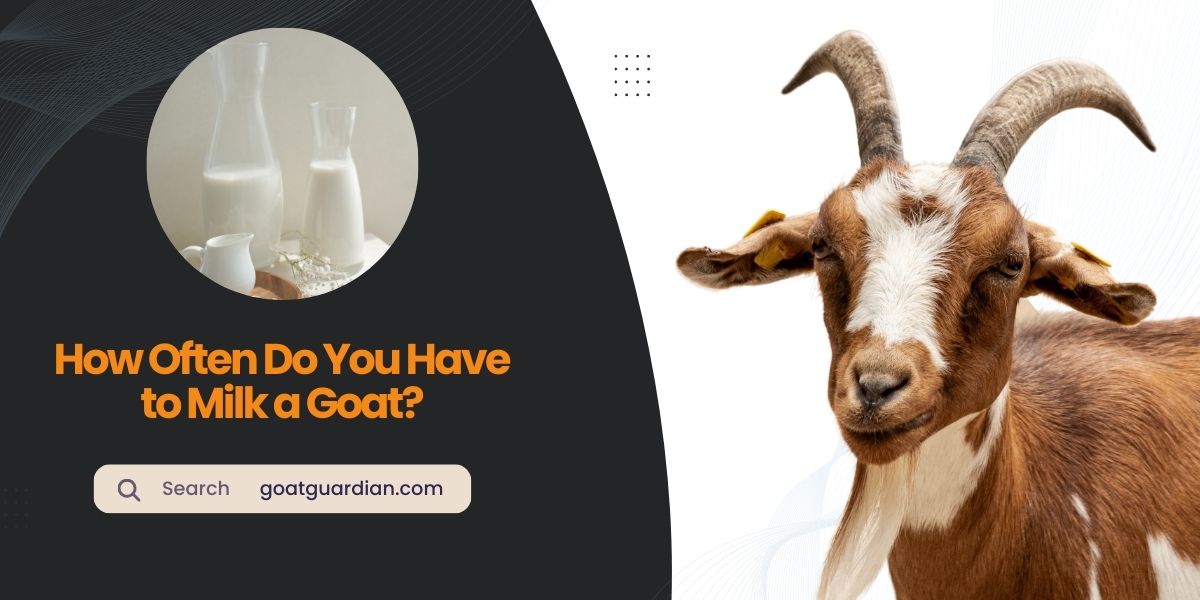How Often Do You Have to Milk a Goat?
Goats should be milked twice a day for the majority of the year. This is necessary to ensure a steady milk supply.
Milk Production And Frequency
Goats are very rewarding animals to work with, but they require milking twice a day for most of the year. Milk production in goats is influenced by various factors such as breed, genetics, nutrition, and lactation stage. Understanding the milk production process is essential in determining the ideal milking frequency for goats.
For goats that have recently given birth, they will continue to produce milk as long as the kid is suckling or regular milking is practiced. However, if milking is ceased, they will dry up and stop producing milk. Unlike cows, goats do not need to be rebred every year to maintain milk production after freshening. They can continue to produce milk for a considerable period of time.
While milking goats twice a day is the standard practice, some goat owners may choose to milk once a day. This can be done by staggering the breeding of two does or through careful management and monitoring of milk production. It is important to note that the milking frequency should be adjusted based on the decrease in milk production over time.
Overall, the milk frequency for goats should be tailored to individual goat’s needs and health. By understanding the factors affecting milk production and closely monitoring milk output, goat owners can determine the most appropriate milking schedule.
Milking Techniques And Practices
| Proper milking techniques for goats: Milking goats twice a day for the majority of the year is necessary to maintain their milk production. However, it is important to note that goats can produce milk for a while after giving birth without needing to be rebred annually. If not rebred, their milk production will eventually decrease. To milk your goats just once a day, you can follow a specific schedule once you notice a decrease in milk production. Begin milking your goat once every other day for two weeks and then move to once every three days for another week. This can help reduce the milking frequency while still maintaining milk production. |
| Equipment needed for milking goats: When milking goats, it is essential to have the right equipment to ensure efficiency and hygiene. Some of the equipment you will need includes a milking stand or stanchion to secure the goat during milking, a milking bucket or milking machine to collect the milk, teat wipes or a teat dip for sterilization, and a strainer to remove any impurities from the milk. It is important to regularly clean and sanitize all equipment to prevent any contamination and maintain the quality of the milk. |
| Sterilization and hygiene practices during milking: Proper sterilization and hygiene practices are crucial when milking goats to ensure the safety and quality of the milk. Before milking, make sure to clean the goat’s udder and teats using warm water and a mild cleanser specifically designed for goats. Use teat wipes or a teat dip containing iodine or another approved antiseptic to sanitize the teats before milking. It is essential to wear gloves and avoid touching the teats or milk with bare hands to prevent any contamination. Regularly clean and sanitize all milking equipment, including the milking bucket or machine, teat cups, and strainer after each milking session. Store the milk in a clean, sealed container and refrigerate it immediately to maintain its freshness and prevent the growth of harmful bacteria. |
Adjusting Milking Frequency
Transitioning from twice a day to once a day milking can be a gradual process for goats. It is important to consider the stage of lactation when adjusting milking frequency. During early lactation, when milk production is at its peak, it is recommended to milk goats twice a day to maximize milk yield.
As lactation progresses, and milk production starts to decline, transitioning to once a day milking can be considered. This can be done by gradually increasing the time between milkings. It is important to closely monitor milk production during this transition period and ensure that the goat is not experiencing any discomfort or excessive engorgement.
Managing milk production during the transition is crucial, as sudden changes in milking frequency can negatively impact the goat’s udder health and milk production. Gradually reducing milking frequency while monitoring the goat’s udder health and milk production will help ensure a smooth transition to once a day milking.
Frequently Asked Questions For How Often Do You Have To Milk A Goat
What Happens If I Don’t Milk My Goat?
If you don’t milk your goat, it will stop producing milk. Goats only produce milk after giving birth and will continue to do so as long as the kid is suckling or you are regularly milking them. When you stop milking, they will dry up and stop producing milk.
Do You Have To Milk A Milk Goat Everyday?
Goats should be milked twice a day for most of the year. However, some sources suggest that once-a-day milking can be done once milk production starts to decrease. They will produce milk as long as the kid is suckling or you are regularly milking them.
If you stop milking, they will dry up and stop producing.
How Long After Kidding Can You Milk A Goat?
You can milk a goat immediately after kidding, as long as the kid is suckling or you are regularly milking them. They will continue to produce milk as long as you maintain a milking routine.
Can You Milk A Goat All Year Round?
Goats can be milked all year round, but they need to be milked twice a day for most of the year. However, if you have two does, you can stagger breeding to have milk year-round. Otherwise, milk production may vary, with some months having plenty of milk and others without any.
Conclusion
Milking a goat is a task that requires consistency and dedication. For the majority of the year, goats need to be milked twice a day. However, there are methods to milk them just once a day if needed. It is important to note that goats will only produce milk as long as they are regularly milked or their kid is suckling.
Overall, maintaining a proper milking schedule ensures a steady milk supply and a healthy goat.






